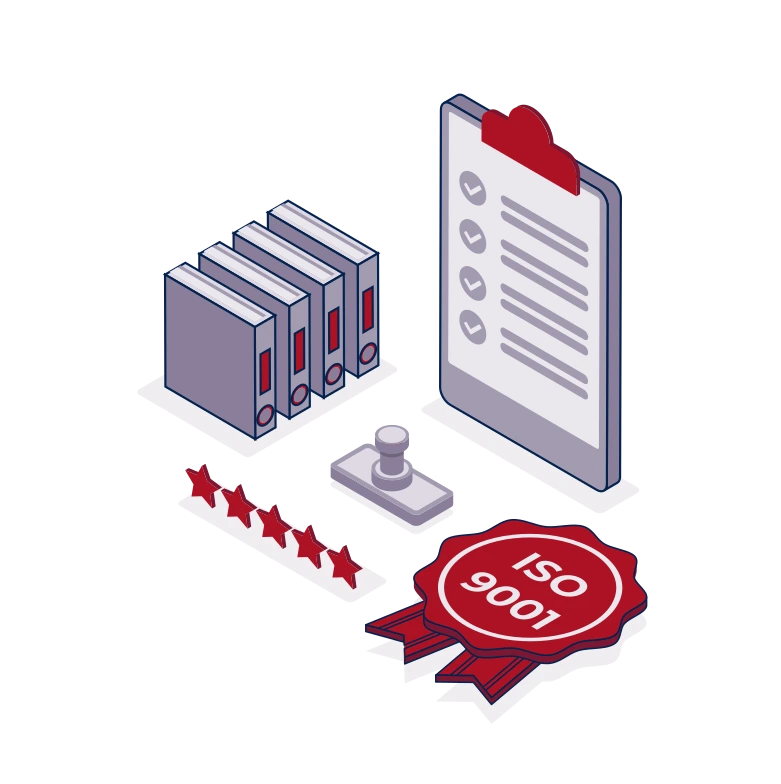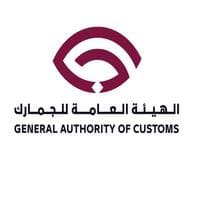Freight Shipping between Qatar and Russia | Rates – Transit times – Duties and Taxes
Shipping items from Qatar to Russia needn't be more challenging than finding a camel in a snowstorm! Dealing with varying rates, complex transit times and understanding customs regulations can indeed seem like a steep mountain to climb. In this destination guide, we strive to simplify this process by providing you with clear and concise information on the diverse freight options available – be it by air, sea, or land, along with intricate details about customs clearance, applicable duties, taxes, and valuable advice specifically designed for businesses at every stage. If the process still feels overwhelming, let DocShipper handle it for you! We are seasoned players in the realm of international freight forwarding, turning intricate shipping challenges into successful, smooth-sailing operations for businesses every single day.
Which are the different modes of transportation between Qatar and Russia?
Which are the different modes of transportation between Qatar and Russia? Shipping goods between Russia and Qatar involves careful decisions, primarily steered by geography. Picture crossing continents--you're voyaging from the vast icy tundra of Russia to the warm, sandy landscapes of Qatar. With a scattered array of countries and physical barriers in between, road and rail might pose challenges. Comparatively, air and sea freight shine as convenient conduits. They're like quicker, hassle-free elevators in an obstacle-laden multi-storied building. The choice between the skies and the seas largely depends on your goods' nature and urgency, plus your budget. Why not simplify this complex decision to a matter of flying birds or sailing ships?
Need help with your shipment?
Need assistance with your shipment? Dont hesitate to contact us even for a simple question. Choose the option that suits you
Live chat with an expert Chat on WhatsApp Free Quote 24hHow can DocShipper help you

Sea freight between Qatar and Russia
The complexity of international trade can seem like a puzzle, but fret not, that’s why this guide is here. Between the opulence of Doha’s skyline and the bustling streets of Moscow, lies an intricate trade bond nurtured by the vast ocean. The sea route, with its economical fares, serves as an excellent choice for businesses moving high-volume goods, even if time isn’t its biggest ally. Key cargo ports like Hamad in Qatar and Novorossiysk in Russia, act as the sturdy anchors of this trade relationship.
Now, let’s talk about the elephant in the room – shipping between these countries isn’t a walk in the park. Are you tired of making common mistakes? Often stumbled upon the unforeseen challenges of customs nesting in import-export rules? The good news is, there is a method to the madness. Our guide will break down the best practices and specifications that can turn this daunting task into an easier journey. Stay tuned. Let’s bring your shipping game to the next level!
Main shipping ports in Qatar
Hamad Port
Location and Volume: Located southwest of Doha in Umm Al-Houl, Hamad Port is central to Qatar’s import and export activity, handling approximately 2 million TEU per year.
Key Trading Partners and Strategic Importance: Hamad Port’s main trading partners are China, Oman, India, and the United Arab Emirates. With state-of-the-art technology, the port contributes to providing faster, more efficient logistical services.
Context for Businesses: If you’re looking to establish a robust logistics route in the Middle East, Hamad Port has the necessary infrastructure and capacity. Its strategic location and modern facilities can offer a significant advantage with efficient and reliable shipment facilities.
Ruwais Port
Location and Volume: Located on the west coast of Qatar, Ruwais Port is a smaller port but crucial nevertheless for specific industries, serving the local fishing industry and facilitating imports for northern Qatar.
Key Trading Partners and Strategic Importance: Ruwais Port enables importers and exporters to bypass the longer journey to Doha, being particularly efficient for small-sized cargo ships. Its geographic position is strategic for covering the northwestern part of the country.
Context for Businesses: If your operations require smaller shipping volumes, or your business is associated with fisheries, Ruwais Port offers a strategically-located hub that can enhance your logistics efficiency.
Halul Island Port
Location and Volume: Located on Halul Island, Halul Port primarily serves the oil and gas industry and is an essential part of Qatar’s energy sector logistics network.
Key Trading Partners and Strategic Importance: Halul Island serves as the base for dozens of offshore oil platforms. Oil and gas are piped to the island, where it’s processed for further distribution.
Context for Businesses: Businesses in the oil and gas industry might find strategic advantages using Halul Island Port for their logistics given its proximity to offshore oil terminals and its essential role in Qatar’s energy distribution infrastructure.
Main shipping ports in Russia
Port of Novorossiysk
Location and Volume: Located on the Black Sea, the Port of Novorossiysk is the largest in Russia, handling over 142 million tons of cargo annually.
Key Trading Partners and Strategic Importance: It trades primarily with countries in the European Union, Turkey, and Egypt, with key exports including crude oil, coal, and metals. The port’s deep-water facilities mean it can accommodate larger vessels than other Russian ports.
Context for Businesses: If you’re trading with Europe or the Middle East, the Port of Novorossiysk could be a crucial part of your supply chain due to its massive cargo handling capacity and its location.
Port of Saint Petersburg
Location and Volume: The Port of Saint Petersburg, located on the east coast of the Gulf of Finland, is the second-largest port in Russia, handling more than 58 million tons of cargo each year.
Key Trading Partners and Strategic Importance: The main trading partners include countries in the European Union, China, India, and the USA. Key exports are crude oil, oil products, coal, and forest products.
Context for Businesses: If your business handles traditional cargoes, especially forest products, the Port of Saint Petersburg might be a strategic choice due to its specialized terminals and its proximity to key European markets.
Port of Vladivostok
Location and Volume: Located by the Golden Horn Bay on the Pacific Ocean, the Port Vladivostok is the most eastern port of Russia, handling about 16 million tons of cargo annually.
Key Trading Partners and Strategic Importance: It is a vital gateway for Russia’s trade with East Asia, especially China, Japan, and South Korea, shipping oil products, foodstuff, metals, and machinery.
Context for Businesses: If you’re targeting markets in East Asia, the Port of Vladivostok could be an essential part of your logistics plan due to its strategic location and its comprehensive cargo handling capabilities.
Port of Kaliningrad
Location and Volume: Located in the Baltic Sea, the Port of Kaliningrad handles over 12 million tons of cargo annually.
Key Trading Partners and Strategic Importance: Main trading partners include countries such as Germany, the Netherlands, and the UK, with key exports being minerals, metals, and grain.
Context for Businesses: The Port of Kaliningrad is an invaluable asset if you’re looking to tap into the European and Baltic markets. Its modern infrastructure supports the efficient handling of a diversified cargo base.
Port of Murmansk
Location and Volume: The Port of Murmansk, located in the northwest part of Russia in the Arctic Ocean, handles over 14 million tons of cargo annually.
Key Trading Partners and Strategic Importance: It trades mainly with countries in Europe, specifically Germany, UK, and Netherlands. The port majorly exports oil, gas, coal, and fish.
Context for Businesses: If you’re in the energy, extractive or fishing businesses, Murmansk may serve as a key component of your logistics strategy due to its focus on these products and its access to Arctic and North Atlantic shipping lanes.
Port of Vostochny
Location and Volume: Located in the Sea of Japan, the Port of Vostochny is the largest Russian container port in the Far East, handling approximately 7 million tons of cargo each year.
Key Trading Partners and Strategic Importance: It trades primarily with countries in Asia, especially China, Japan, and South Korea. Key shipments include metal products, coal, and mineral fertilizers.
Context for Businesses: If your operation involves the Far Eastern markets, the Port of Vostochny’s specialized containers handling facilities can be of advantage. With direct access to the Trans-Siberian Railway, it also provides efficient links to Russia’s interior and beyond.
Should I choose FCL or LCL when shipping between Qatar and Russia?
Deciding between Full Container Load (FCL) and Less than Container Load (LCL), also known as consolidation, is a critical choice for businesses shipping goods from Qatar to Russia. Your decision can significantly influence cost, delivery timing, and overall success of the shipment. This section will unfurl the key differences, pros, and cons, helping tailor your shipping strategy. With a comprehensive understanding, you’ll be empowered to select the method aligning perfectly with your specific needs – because strategic shipping matters. Let’s dive in and unravel the intricacies of both FCL and LCL to make your logistics smooth sailing.
Full container load (FCL)
Definition: FCL (Full Container Load) shipping is a type of ocean freight where you rent an entire container (either a 20’ft, 40’ft, etc.) for your goods alone, providing an exclusive, secure space for your cargo.
When to Use: If your cargo volume exceeds 13, 14, or 15 cubic meters (CBM), FCL shipping becomes the more cost-effective and secure option. Considering the longer shipping route between Qatar and Russia, FCL's advantage of sealing from origin to destination adds an extra layer of safety to your goods.
Example: Take the case of a manufacturer, for instance, shipping 1000 boxes of car parts. Given their combined size, the most cost-effective solution is to use an FCL container. This not only proves cheaper but also safeguards the goods against possible damages from mixed loose cargo.
Cost Implications: When you request an FCL shipping quote, it's crucial to remember that while the initial cost might seem high, you're paying for the whole container, making it cheaper for high volume shipments. Furthermore, the protection it offers against potential damages could save you from surprise expenses along the way. In this sense, FCL can provide both significant savings and peace of mind.
Less container load (LCL)
Definition: Less than Container Load (LCL) shipping denotes transporting goods that don't fill an entire container. It's a method used in sea freight where multiple LCL shipments are consolidated into a full container for efficiency.
When to Use: LCL is favored for lower volumes, typically when the cargo volume is less than 13/14/15 cubic meters (CBM). It provides more flexibility as you only pay for the space your goods occupy, and not an entire container.
Example: Consider an automobile parts manufacturer in Qatar that needs to ship 5 CBM of goods to a client in Russia. Opting for LCL freight, the company shares container space with other shippers. This way, they can get their goods shipped without waiting to amass enough merchandise for a Full Container Load (FCL).
Cost Implications: LCL shipping is usually less expensive for small volumes as the cost is split among multiple shippers. However, it may include added costs for the consolidation and deconsolidation processes. This can make the overall expense of an LCL shipment higher per unit compared to FCL shipping. It’s vital to get an accurate LCL shipping quote to evaluate if this option is cost-effective for your shipment.
Hassle-free shipping
Shipping between Qatar and Russia, and bogged down by choices? Let DocShipper handle the hassle. With a team of ocean freight experts at your beck and call, we analyze your shipping volume, frequency, and budget to recommend the best path forward- be it consolidation or a full container. Our goal? To simplify your cargo shipping journey. Ready for a smooth sail? Reach out to us for a complimentary, no-obligation estimation today.
In the world of ocean freight, shipping goods from Qatar to Russia generally takes around 23 days. This transit time is subject to the specific sea ports used, the weight of the goods, and their nature. Each shipping journey is unique, so these variables can markedly influence delivery times. If your specific shipment needs a more accurate estimate, reaching out to a freight forwarder like DocShipper can help you receive a tailored quote.
| Qatar Ports | Russia Ports | Average Shipping Time (Days) |
| Hamad Port | Saint Petersburg Port | 22 |
| Mesaieed Port | Novorossiysk Port | 18 |
| Al Ruwais Port | Vladivostok Port | 27 |
| Hamad Port | Kaliningrad Port | 23 |
Note: Shipping times indicated in the table are approximations and can vary based on the factors mentioned earlier. Please consult with your freight forwarder to get exact timings.
How much does it cost to ship a container between Qatar and Russia?
Estimating the exact shipping cost between Qatar and Russia can be a bit tricky, due to varying factors such as the Point of Loading, Point of Destination, chosen carrier, the nature of goods, and market fluctuations. Cost for ocean freight can vary from as low as $50 to as much as $500 per CBM. But don’t worry, this isn’t a number you have to navigate alone. Our shipping specialists are here to guide you every step of the way. Using their expertise and understanding of the ever-changing shipping landscape, they can work closely with you to provide the best, bespoke ocean freight rates and assure the most cost-effective shipping solution, tailored to your unique cargo needs.
Special transportation services
Out of Gauge (OOG) Container
Definition: An OOG container is designed to carry oversized cargo that can’t fit inside a standard container.
Suitable for: It is ideal for over-dimensional or heavy lift cargo such as machinery, industrial equipment, and oversized heaps of raw materials.
Examples: Construction equipment such as cranes, heavy-duty vehicles, or large scale manufacturing units.
Why it might be the best choice for you: If your cargo doesn’t fit into a standard container due to its size or weight, an Out of gauge cargo method might be your solution.
Break Bulk
Definition: The break bulk method involves individually loading and unloading the freight directly onto the vessel.
Suitable for: Unusually shaped and oversized cargo that cannot fit into containers, such as windmill blades, steel beams, or extra-large machinery.
Examples: The shipment of large turbines, generators, or wooden logs are often carried this way.
Why it might be the best choice for you: If your cargo is too large or heavy for containers and doesn’t require the additional protection a container provides, you might find break bulk shipping more economical.
Dry Bulk
Definition: Dry bulk shipping involves the transportation of homogeneous commodities in large quantities, typically poured directly into the ship’s hold.
Suitable for: Commodities such as minerals, grain, coal, or sand.
Examples: Large quantities of wheat, cement, or coal are shipped via dry bulk method.
Why it might be the best choice for you: If you’re shipping large quantities of loose cargo load like grains or coal, dry bulk shipping offers a cost-effective solution.
Roll-on/Roll-off (Ro-Ro)
Definition: Ro-ro vessels are designed to carry wheeled cargo that can be driven or towed on and off the ship on their own.
Suitable for: Cars, trucks, semitrailers, trailers, and railroad cars.
Examples: Ro-Ro shipping is primarily used for the international transport of cars and trucks.
Why it might be the best choice for you: If your cargo can be driven or towed, consider the efficiency and convenience of ro-ro vessel shipping.
Reefer Containers
Definition: Refrigerated containers are temperature-controlled shipping units used to transport goods requiring specific climatic conditions.
Suitable for: Perishable goods such as fruits, vegetables, dairy products, or seafood.
Examples: Wines, flowers, pharmaceutical products, and meats are typically transported in reefer containers.
Why it might be the best choice for you: If your product needs to stay fresh during transport, a reefer container can provide the necessary controlled environment.
The shipping industry can often be perplexing, with its array of shipping methods, but remember, at DocShipper, we’re here to guide you. Regardless of your freight’s nature, size, or special needs, we’re confident in finding the right solution. Contact us for your free shipping quote within less than 24 hours!
Air freight between Qatar and Russia
If you’re shipping high-value goods like electronics or pharmaceuticals from Qatar to Russia, air freight is your ace in the pack! Imagine it as a fast and reliable delivery driver, bringing your small, valuable packages safely to their destination while you sip your tea, thousands of miles away.
However, not all is crystal clear in the skyways of air freight. Unforeseen turbulence rocks some shippers, who bumble into common pitfalls like misestimating their shipment’s weight. For instance, did you remember that air freight rates use a special formula based on volume rather than actual weight? Similarly, a lack of knowledge about industry best practices could lead to cost overruns thicker than a Russian winter. So, buckle up for the whirlwind ride in this guide as we unpick these knots, ensuring your air freight experience is as smooth as a jet-setter’s journey.
Air Cargo vs Express Air Freight: How should I ship?
Getting your goods from Qatar to Russia quickly and efficiently is crucial for your business. But should you choose air cargo or express air freight? Let’s break it down – air cargo uses space in commercial airlines, while express freight whisks your items on dedicated planes for speedier delivery. Let’s delve deeper to understand which one suits your specific needs the best.
Should I choose Air Cargo between Qatar and Russia?
When shipping from Qatar to Russia, air cargo may be your optimal choice, especially for cargo weighing over 100-150 kg. Taken care by prominent airlines like Qatar Airways and Aeroflot, your freight can enjoy cost-effectiveness and reliability. Despite longer transit times due to fixed schedules, rest assured that your cargo will be handled promptly and securely. Explore this method if budget-friendly solutions suit your business better.

Should I choose Express Air Freight between Qatar and Russia?
Opting for express air freight, a service provided by entities like FedEx, UPS, or DHL, might be the ideal shipping solution for your goods between Qatar and Russia, especially if your shipment is under 1 Cubic Meter or weighs less than 100/150 kg (220/330 lbs). Using exclusive cargo planes devoid of passengers, this mode ensures swift and safe delivery. With this, you can easily navigate time-critical situations or protect delicate items, gaining a competitive footing in your target market. Remember, every choice matters in international freight forwarding.

Main international airports in Qatar
Hamad International Airport
Cargo Volume: As the hub for Qatar Airways Cargo, Hamad International Airport handles over 2 million metric tons of freight annually.
Key Trading Partners: The main trading partners served by this airport include China, USA, Germany, UK, and South Korea.
Strategic Importance: Given its strategic geographical location in the Middle East, Hamad International Airport acts as a crucial cargo hub that supports fast and efficient shipment services across the globe. Furthermore, it is a significant link between the East and the West, with over 150 international destinations.
Notable Features: This airport boasts a state-of-the-art cargo terminal equipped with the latest technology to handle all types of cargo, including perishables, pharmaceuticals, live animals, and high-value items, with a capacity to handle up to 1.4 million metric tons of cargo per year.
For Your Business: If your business frequently ships to/from the Middle East, Asia, or Europe, Hamad International Airport could provide a reliable and efficient logistics solution. Its high cargo capacity and advanced facilities mean that businesses can plan regular, high-volume shipments with confidence.
Al Udeid Air Base
Cargo Volume: The Al Udeid Air Base does not publicly disclose its cargo volumes. However, as home to the largest military base in Qatar, it is safe to assume its cargo volumes are substantial.
Key Trading Partners: Primarily handling military cargo, its key trading partners relate mostly to NATO operations.
Strategic Importance: While this airport’s pertinence is primarily military, it plays a vital role in supporting strategic interests in the region.
Notable Features: Outside its military functions, Al Udeid Air Base has limited commercial capability, but it’s a key airfield for potential logistical use during critical humanitarian operations or other emergencies.
For Your Business: The commercial use of Al Udeid Air Base is restricted. However, businesses working with military contracts or responding to humanitarian crises may find this air base to be a key logistical link.
Main international airports in Russia
Domodedovo International Airport
Cargo Volume: With an annual cargo volume of over 235,000 tons, Domodedovo ranks as one of the busiest cargo airports in Russia.
Key Trading Partners: Key partners predominantly include Germany, China, Italy, and the United States.
Strategic Importance: Domodedovo is a major airfreight hub due to its location near Moscow, accommodating over 200 airlines.
Notable Features: Flights to over 95 international destinations, extensive warehouse facilities, and state-of-the-art cargo handling technologies.
For Your Business: Domodedovo’s vast network and strategic location can help your business rapidly get goods in and out of Russia.
Sheremetyevo International Airport
Cargo Volume: Annual volume reaching nearly 318,000 tons, Sheremetyevo is Russia’s leading airport for cargo traffic.
Key Trading Partners: Most important trade partners are China, Germany, United States, and Turkey.
Strategic Importance: Sheremetyevo’s proximity to Moscow makes it an ideal hub for trade between Europe and Asia.
Notable Features: Home to several international airlines, large cargo terminal with advanced facilities, and operates around the clock.
For Your Business: Sheremetyevo’s high-volume capability and ideal geographic location can provide efficient logistics solutions for your business.
Novosibirsk Tolmachevo Airport
Cargo Volume: An annual cargo handling capacity of 50,000 tons, Tolmachevo plays a key role in Siberian region.
Key Trading Partners: Major trading partners are China, Germany, Kazakhstan, and Japan.
Strategic Importance: Tolmachevo’s location at the crossroads of multiple trade routes allows it to be a strategic transcontinental hub.
Notable Features: Offers modern Warehousing and cargo handling facilities, 24/7 operations, and a free customs area.
For Your Business: If your business regularly ships goods to or from the Siberian region, Tolmachevo could be your major logistical respect.
Pulkovo Airport
Cargo Volume: Over 38,000 tons of cargo annually places Pulkovo as a significant cargo handler.
Key Trading Partners: Main trade routes connect with Germany, France, China, and the United Arab Emirates.
Strategic Importance: Pulkovo’s location in Saint Petersburg positions it favorably for Northern European trade.
Notable Features: Modern cargo terminal, high safety standards, and vast flight network.
For Your Business: Pulkovo’s location and connections make it an effective gateway for businesses targeting Northern European markets.
Vnukovo International Airport
Cargo Volume: With over 60,000 tons of annual cargo, Vnukovo is a key player in the region’s air cargo industry.
Key Trading Partners: Partners primarily include Turkey, Germany, China, and the United States.
Strategic Importance: Being the third busiest airport in Russia, its significance in international air cargo movement is large.
Notable Features: The airport boasts extensive infrastructure, including modern cargo terminals and around the clock operations.
For Your Business: If your shipment is time-sensitive, Vnukovo airport’s extensive infrastructure and high-frequency departures might be best for your operations.
How long does air freight take between Qatar and Russia?
With an average shipping duration of approximately 4 to 6 days, the transit time from Qatar to Russia by air freight is impressively efficient. However, it’s important to remember that this duration may vary significantly depending on the specific airports involved, the weight of the cargo, and the nature of the goods being transported. For the most accurate timing estimations, it’s always wise to consult with an experienced freight forwarder such as DocShipper.
How much does it cost to ship a parcel between Qatar and Russia with air freight?
Air freight costs between Qatar and Russia can roughly average between $2 to $5 per kilogram, but keep in mind, this is a very broad estimate. Precise costs cannot be predetermined due to factors such as airport distance, parcel dimensions and weight, and nature of goods. However, rest assured that our team is committed to providing the best and most competitive quotes for your specific needs, assessing each case individually. Want to know more? Contact us to receive a free quote in less than 24 hours.
What is the difference between volumetric and gross weight?
Gross weight refers to the actual weight of your shipment, including goods and packaging. Volumetric weight, on the other hand, is a calculated weight based on how much space your package occupies. Understanding both is key to calculating costs in air freight shipping.
To calculate the gross weight in air cargo, you just weigh the total package. For example, if you have a package that weighs 30 kg, it would be 66 lbs.
Volumetric weight is calculated a little differently. In air cargo, you use this formula: Length (cm) x Width (cm) x Height (cm) / 6000. For express air freight services, the divisor changes to 5000. So, let’s say you’re shipping a box measuring 40cm x 30cm x 20cm. The volumetric weight in air cargo would be: 40 x 30 x 20 / 6000 = 4 kg (8.82 lbs) and in express air freight: 40 x 30 x 20 / 5000 = 4.8 kg (10.58 lbs).
Freight charges depend on these calculations. Carriers will charge based on either the gross weight or the volumetric weight – whichever is higher. This is called the chargeable weight. So knowing how to calculate each weight can help you anticipate your shipping costs.

Door to door between Qatar and Russia
Navigating effortlessly from Qatar’s desert dunes to Russia’s icy tundra, international door-to-door shipping is your fuss-free transit solution. It’s like a concierge service for your freight, covering all logistics from origin to destination. The standout benefit? One main point of contact and zero transportation headache for you! So, ready for a hitch-free freight experience? Let’s dive in!
Overview – Door to Door
If you’re muddled by the complexities of shipping goods between Qatar and Russia, DocShipper’s door-to-door service is your stress-free solution. This service covers everything from initial collection to final delivery, sparing you the headache of customs clearance and transportation arrangements. It’s our most favored service for its convenience and efficiency. However, be prepared for slightly higher costs due to the comprehensive nature of services included. The upside? Peace of mind and more time for your core business. Isn’t that worth considering?
Why should I use a Door to Door service between Qatar and Russia?
Ever found moving goods from Qatar to Russia as bewildering as a three-handed wash in an Arabic meyhana? Well, Door to Door service eases that confusion into a serene, worry-free experience. Here’s why this might just be your logistic lifesaver:
1. Stress-Free Logistics: Door to Door service takes off your plate the logistics-related stress. From your doorstep in Qatar to your destination in Russia, it takes care of it all – pick-up, customs clearance and even the delivery at the drop-off point, leaving you with peace of mind that we all crave.
2. Timely Delivery: Got an urgent shipment and time is squeezing you like a lemon? Opt for Door to Door service. It ensures your cargoes reach their destination on time, so you can relax knowing that your time-sensitive products are in safe, fast hands.
3. Complex Cargo Care: If your cargo has more twists and turns than a good old detective novel, rest easy. Door to Door services specialize in handling complex cargoes. They ensure your goods – no matter how tricky or fragile – are handled and delivered with utmost care and precision.
4. All-Round Convenience: Can’t be bothered navigating the meandering paths of international shipping? Door to Door service is like having a personal guide that flawlessly maneuvers your freight through every shipping leg, from Qatar’s heat-scorched plains to Russia’s frost-bitten tundra.
5. End-to-End Tracking: Feel like tapping into your inner Sherlock Holmes? With Door to Door service, you can. It offers real-time tracking enabling you to follow your shipment’s progress from Qatar to Russia, letting you be in the loop, every step of the way.
Encapsulating all these reasons, Door to Door service makes your freight forwarding experience rather like a smooth magic carpet ride from Qatar to Russia – easier, quicker, and notably more convenient. So why wait, say Privet to hassle-free shipping!
DocShipper – Door to Door specialist between Qatar and Russia
Experience hassle-free door-to-door shipping between Qatar and Russia with DocShipper. Our dedicated team expertly manages all aspects of your shipment, from packing to customs clearance, ensuring a smooth and efficient transport process across all shipping methods. Lean back and let us handle the complexities of international freight. You’re just a call or click away from your dedicated Account Executive, ready to provide a quick, cost-effective shipping solution tailored to your needs. Get your free estimate in less than 24 hours!
Customs clearance in Russia for goods imported from Qatar
Navigating customs clearance—the process for importing goods officially into Russia from Qatar—can be complex. It’s a maze of fees, taxes, duty quotas, and licensing requirements that can ensnare the unaware, potentially causing costly delays. Get it wrong, and goods can get stuck in customs, causing you headaches and leaving your business vulnerable to unexpected charges. Understanding the intricacies is crucial to avoid pitfalls and smooth international shipping.
Fear not as the following sections untangle this process, paving the way for stress-free imports. Remember, DocShipper is your expert guide in this global maze, providing assistance for any type of goods, from anywhere in the world. Want an estimate for your project? Simply provide us with the origin of your goods, their value, and the HS Code. With these essentials, we can assist you every step of the way.
How to calculate duties & taxes when importing from Qatar to Russia?
Successfully estimating duties and taxes when importing from Qatar to Russia involves a delicate dance around five main pillars. First, the country of origin, which marks the birthplace of your goods. Second, the HS Code, the universal language of commerce, categorizing each product in the global marketplace. Third, the Customs Value determines the economic worth of the goods at the border. Fourth, the Applicable Tariff Rate – global trade’s guiding star, affecting the cost of cross-border commerce.
And, lastly, other fees and taxes, the spiderweb of additional costs that can catch importers off guard. The first stride on this complex choreography is all about identifying the exact geographical location where the goods were manufactured or produced, the origin country. This initial step, though seemingly simple, plays a pivotal role in determining your import costs and overall shipping success.
Step 1 – Identify the Country of Origin
Knowing your product’s Country of Origin is like having a passport- it’s the start of your importing journey. Here’s why it’s so crucial:
1. Tariff Classification: That’s the fancy term for the international system of labelling goods, known as the HS Code. It incorporates the Country of Origin.
2. Customs Duties: Each country has specific trade agreements that impact expenses- more on that in a minute.
3. Import Restrictions: The Country of Origin can be the difference between a smooth ride through customs or major holdups.
4. Preferential Treatment: Some trade alliances give preferential treatment to lower duties or even duty-free entry.
5. Fraud Prevention: It keeps the dishonest folks out by preventing fraudulent transactions.
Now, let’s look at the Qatar-Russia connection. These countries share a Free Trade Agreement- a big bonus that can lower or eliminate customs duties. But remember, not all products qualify, so it’s key to check specific commodity codes under this agreement.
Avoid importing restrictions by researching beforehand. Russia has strict regulations on agricultural products from Qatar- so if that’s your business, please tread carefully.
Remember, the journey of a thousand miles begins with a single step- or in this case, the right Country of Origin.
Step 2 – Find the HS Code of your product
Initiating a successful international shipment often starts with a crucial piece of information known as the Harmonized System Code or HS Code. This is a universally recognized system of names and numbers used to classify traded products. Determining the correct HS Code for your product is not only integral for navigating customs regulations but also for calculating duties and taxes.
One of the easiest ways to discover your product’s HS Code is through direct communication with your supplier. Suppliers tend to be knowledgeable about the products they’re dealing with, especially in terms of exportation, and can often provide the related HS Code.
However, if this isn’t feasible, we have provided a simple step by step guide to help you ascertain the HS Code on your own. You can start by using the Harmonized Tariff Schedule lookup tool. This user-friendly search engine allows you to find your product’s HS code via a straightforward process. Just enter the name of your product in the search bar. From there, glance through the Heading/Subheading column, and therein lies your corresponding HS Code.
Note of caution: Selecting an accurate HS Code is paramount. If you miscategorize your product, this could lead to shipping delays or even fines from customs authorities, due to erroneous documentation.
Here’s an infographic illustrating the fundamentals of an HS Code and how to decipher it. This visualization will enable you to gain a complete understanding of the Harmonized System.
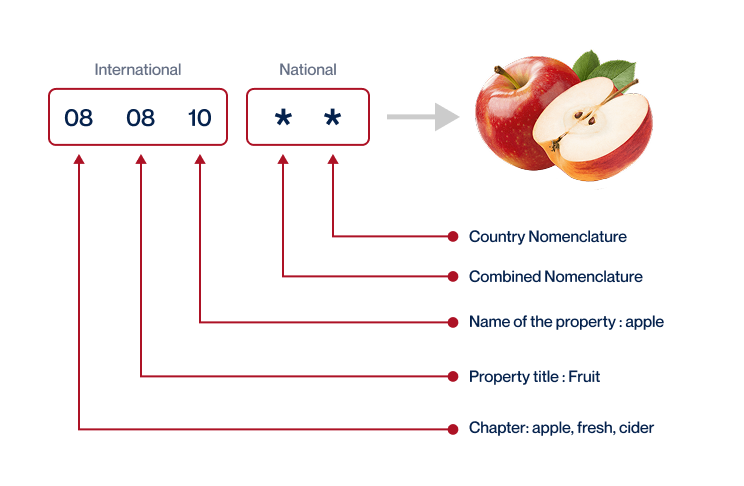
Step 3 – Calculate the Customs Value
Deciphering ‘customs value’ can feel like untangling a knotted web, but it’s crucial to your shipping process from Qatar to Russia. Unlike product value, customs value is a more comprehensive calculation. Think of it as the sum total of your product cost, international shipping, and insurance – this is your Cost, Insurance, and Freight (CIF) value in shipping lingo.
So let’s say you’re importing goods worth $10,000 from Qatar, paying $800 for shipping, and $200 for insurance. Your customs value isn’t $10,000, it’s actually $11,000 ($10,000 + $800 + $200). This CIF value is the real magnet for customs duties, helping determine how much you owe. Remember this formula: Product Cost + Shipping Cost + Insurance Cost = Customs Value. Now, you’re well-equipped to capture those elusive customs costs and send your goods from Qatar to Russia without a hitch.
Step 4 – Figure out the applicable Import Tariff
Import tariffs, often termed as customs duties, are taxes levied on goods imported into a country. In the case of Russia, these tariffs are based on the Customs Tariff of the Eurasian Economic Union (EAEU).
To identify the applicable import tariff for a product imported from Qatar, follow these steps:
1. Using the Harmonized System code (HS code), a standardized numerical method of classifying traded products, identify the code related to your product.
2. Refer to the EAEU Integrated Tariff to discover the import tariff of your product with the identified HS code.
For example, let’s assume you’re importing wooden furniture from Qatar with an HS code of 940161 (seats with wooden frames). According to the EAEU Integrated Tariff, the duty rate is 10%.
Now, to calculate the actual duty you would pay, let’s assume that your Cost, Insurance, and Freight (CIF) value for the furniture is $10,000. Your duty would therefore be 10% of the CIF, amounting to $1,000. Thus, understanding your import tariff can greatly influence your overall cost analysis and budgeting.
Step 5 – Consider other Import Duties and Taxes
In this stage of your import process, it’s paramount to recognize that beyond the basic tariff rate, there may be additional import duties and taxes, contingent on the nature of your product and its country of origin. Specific to Russia, these can include excise duties, anti-dumping taxes, and a crucially important – Value Added Tax (VAT).
Let’s take the VAT as an example, which is typically applied to the cost of goods, freight and insurance, plus any applicable duties. If the VAT rate is 20% and the value of your goods including freight and insurance is $1000 then the VAT you’d have to pay upon import would be $200.
Furthermore, if your product, hypothetically a type of steel, is prone to anti-dumping duty due to being sold at a lower price than its market value, an additional tax could get attached.
Please note these are simplified examples and the actual amounts can differ. It’s always best to stay informed and understand your exact tax liabilities to successfully navigate the import process.
Step 6 – Calculate the Customs Duties
Calculating customs duties in Russia for goods imported from Qatar can seem complex, but it essentially comes down to considering three key components: customs value, Value Added Tax (VAT), and potential anti-dumping taxes.
Imagine you’re importing goods with a customs value of $10,000 with no VAT. If the duty rate is 15%, your customs duties would amount to $1,500.
Now, envision your goods have a customs value of $20,000 and are also subject to VAT at 20%. In this scenario, customs duties would be $3,000 (15% of $20,000) and the VAT would be $4,600 (20% of $20,000 + 20% of the customs duties).
Lastly, if your goods have a customs value of $30,000, fall under a 15% duty rate, a 20% VAT, and also carry anti-dumping taxes of 5% and an excise duty of 3%, you’d owe $4,500 in customs duties, $6,900 in VAT, $1,650 in anti-dumping taxes, and $990 in excise duty.
Remember, each case is unique and having an expert by your side can save you money and headaches. That’s what we’re here for at DocShipper. We handle the full process of customs clearance worldwide and ensure you’re not overpaying. Reach out to us for a free quote in less than 24h, and rest easy knowing your imports are in capable hands.
Does DocShipper charge customs fees?
DocShipper operates as a customs broker in Qatar and Russia, parsing the line between customs clearance fees and customs duties. Our charges pertain solely to clearance, with duties and taxes paid directly to the government. To illustrate, imagine buying a new product in a foreign land – DocShipper’s your savvy guide handling the paperwork, while the government collects the purchase tax. We ensure complete transparency, providing you with Customs Office documents as proof of your direct payments, ensuring you only cover what is officially charged. Hence, shipping remains worry-free and unambiguous.
Contact Details for Customs Authorities
Qatar Customs
Russia Customs
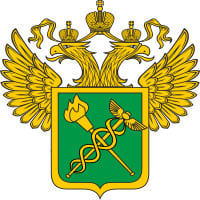
Official name: The Federal Customs Service of the Russian Federation.
Official website: https://oldtokyo.mid.ru/web/tokyo-en/federal-customs-service
Required documents for customs clearance
Confused by customs clearance paperwork? Relax, we’ll sort it out together. In this section, we delve into essential documents like the Bill of Lading, Packing List, Certificate of Origin, and Compliance Documents (CE standard). You’ll understand them in no time!
Bill of Lading
When you’re shipping goods from Qatar to Russia, you’ll need to grasp the importance of the Bill of Lading. Think of it as your package’s passport, marking the change of ownership for your shipment. The lovely thing about this document is its adaptability. Nowadays, you’ve got the option of an electronic or ‘telex’ release. It’s more efficient, safer, and you won’t lose physical copies! For air shipping, no worries – there’s the AWB (Air Waybill) serving the same purpose. These documents are your anchors in the challenging sea of international trade. To keep your shipping experience smooth, always ensure a correct and complete Bill of Lading or AWB. After all, a successful voyage to Russia depends on it.
Packing List
Shipping goods from Qatar to Russia means dealing with customs clearance, and your Packing List is a central part of that process. An accurate Packing List, enumerating the items, quantities, and descriptions, will ensure a swift passage through Russia’s customs, whether you’re shipping via sea or air.
Imagine sending over a shipment of construction equipment – without a meticulous list, a crucial bulldozer part could go unnoticed and hold up the whole process, snowballing into unwanted delays and possible fines. So, whether it’s one box or a hundred, precision in documenting your shipment contents in your Packing List is not just essential – it’s a lifeline for your goods traveling from Qatar to Russia. Remember, the goal is a successful delivery, not a customs hold-up!
Commercial Invoice
So, you need to prepare a Commercial Invoice for shipping between Qatar and Russia? Excellent! This document is your go-to guide for customs clearance, providing essential information about your goods. Key components necessary are the buyer and seller’s details, country of manufacture, Harmonized System (HS) codes, description and quantity of goods, and your terms of delivery. Make sure this aligns perfectly with your other shipping documents, such as the packing list or bill of lading. Misalignments can lead to unwanted hiccups in the clearance process. For example, if you have electrical components on your invoice but they aren’t on your packing list, expect delays. Get it right, and the clearance process will be smooth sailing.
Certificate of Origin
When shipping goods between Qatar and Russia, one vital document you’ll need is the Certificate of Origin. It’s not just a piece of paper, but a passport for your cargo, confirming its roots, its ‘nationality’ if you will. Say, you’re sending machine parts made in Doha to Moscow. Your Certificate of Origin verifies they’re truly Qatari, possibly unlocking beneficial customs duty rates. As every penny matters in business, this perk is not to be overlooked. So, when filing, be precise about the country of manufacture. Here’s a tip: A slight ambiguity about origins may lead to unneeded complications at Russian customs. It’s all about the details. So, ensure your paperwork is tight and your cargo’s voyage between Qatar and Russia becomes a lot smoother.
Get Started with DocShipper
Prohibited and Restricted items when importing into Russia
Cracking the confusion of what to import into Russia? It can be a real head-scratcher, with stern restrictions and prohibitions in place. Let’s clear the fog on forbidden items and constraints attached to your cargo. Remember, playing by the rules keeps your business smooth!
Are there any trade agreements between Qatar and Russia?
While there are currently no specific Free Trade Agreements (FTAs) or Economic Partnership Agreements (EPAs) directly between Russia and Qatar, the two nations maintain a mutually supportive trade relationship. They have ongoing discussions regarding various cooperative initiatives, promising a favorable future trade environment. Notably, Russia’s Gazprom is collaborating with Qatar Petroleum on the North Field project – a clear indication of progressive business relations. Therefore, as a shipper, you can expect these evolving partnerships to potentially offer new opportunities in the near future.
Qatar – Russia trade and economic relationship
Since the late 20th century, Qatar and Russia have fostered a stable trade relationship that has gradually intensified. Mainly built around energy sectors, key milestones include the 2016 Russo-Qatar Economic Council establishment, a significant step in strengthening bilateral relations. Qatar’s investments in Russia are predominantly in the oil and gas sector, with the Qatar Investment Authority owning significant stakes in Russian energy giants like Rosneft. Similarly, Russia’s recent investments focus on Qatar’s infrastructure and real estate sectors.
In 2022, Russia’s exports to Qatar amounted to $145 million, with key products including Copper Wire ($99.8 million), Seed Oils ($12 million), and Chocolate ($5.88 million). Over the past 26 years, Russia’s exports to Qatar have demonstrated steady growth at an annualized rate of 19.5%, rising from $1.42 million in 1996 to $145 million in 2022.
Your first steps with DocShipper
Additional logistics services
Warehousing
Finding the right warehousing service isn't always a breeze, especially when you need specifics like temperature control for your precious cargo. Getting it wrong could spell disaster for your goods. Our dependable warehousing solutions in Qatar and Russia offer the worry-free option you're seeking. Want to find out more? Head over to our Warehousing page for the full low-down.
Packing
Navigating the rough waters between Qatar and Russia? Packaging is essential. It safeguards your goods from handling mishaps and can be your product’s first line of defense against regional climate changes. Our reputable agents have your back, and can handle all goods - from fragile glassware to hefty machinery. With our reliable packaging and repackaging services, your goods are always safe and secure. Trust us, we've got you covered.

Transport Insurance
It's like your venue security - Cargo Insurance. Unlike fire insurance that only covers damages from flames, this safeguards your shipments from unexpected mishaps on the road, at sea, or airborne. Imagine a storm damaging your goods in transit, or an accident in the warehouse - it's these unforeseen hitches Cargo Insurance mitigates, providing that extra layer of protection.
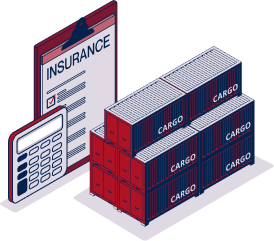
Household goods shipping
Moving your delicate or large items from Qatar to Russia? Don't fret! Our Personal Effects Shipping service attentively handles all your goods - whether it's an ornate chandelier or an oversized couch. We've successfully shipped one customer's antique, hand-carved Qatari door to their new home in Moscow, handling all the complex customs details. Trust us for dedicated care and absolute flexibility.
Procurement in Thailand
Looking to expand your business to Asia or East Europe but stumped by language and procurement processes? With DocShipper, tap into credible suppliers to manufacture your goods. We bridge the language divide, guide you through procurement, and ensure you're not going it alone. for instance, we had substantial success sourcing textiles in East Europe and electronics in Asia.

Quality Control
Quality checks are crucial when shipping between Qatar and Russia. Fumbled with bad quality goods? With Quality Control, your products have to pass rigorous inspections before their journey from Doha to Moscow. Think of it as a detective combing for defects - anything from color discrepancies to faulty mechanisms. Remember those recalls due to unnoticed faults? That's what you dodge with this service, ensuring your goods arrive fit and ready for the Russian market.

Conformité des produits aux normes
Managing product compliance is crucial in the world of international shipping. Our Product Compliance Services ensure your goods meet all required standards, sparing you the hassle of regulatory problems. This includes laboratory testing for certification, giving you peace of mind knowing your shipment will comply with destination rules. Think of it like preparing a student for an exam; we study, test, and ensure they'll pass with flying colors.
